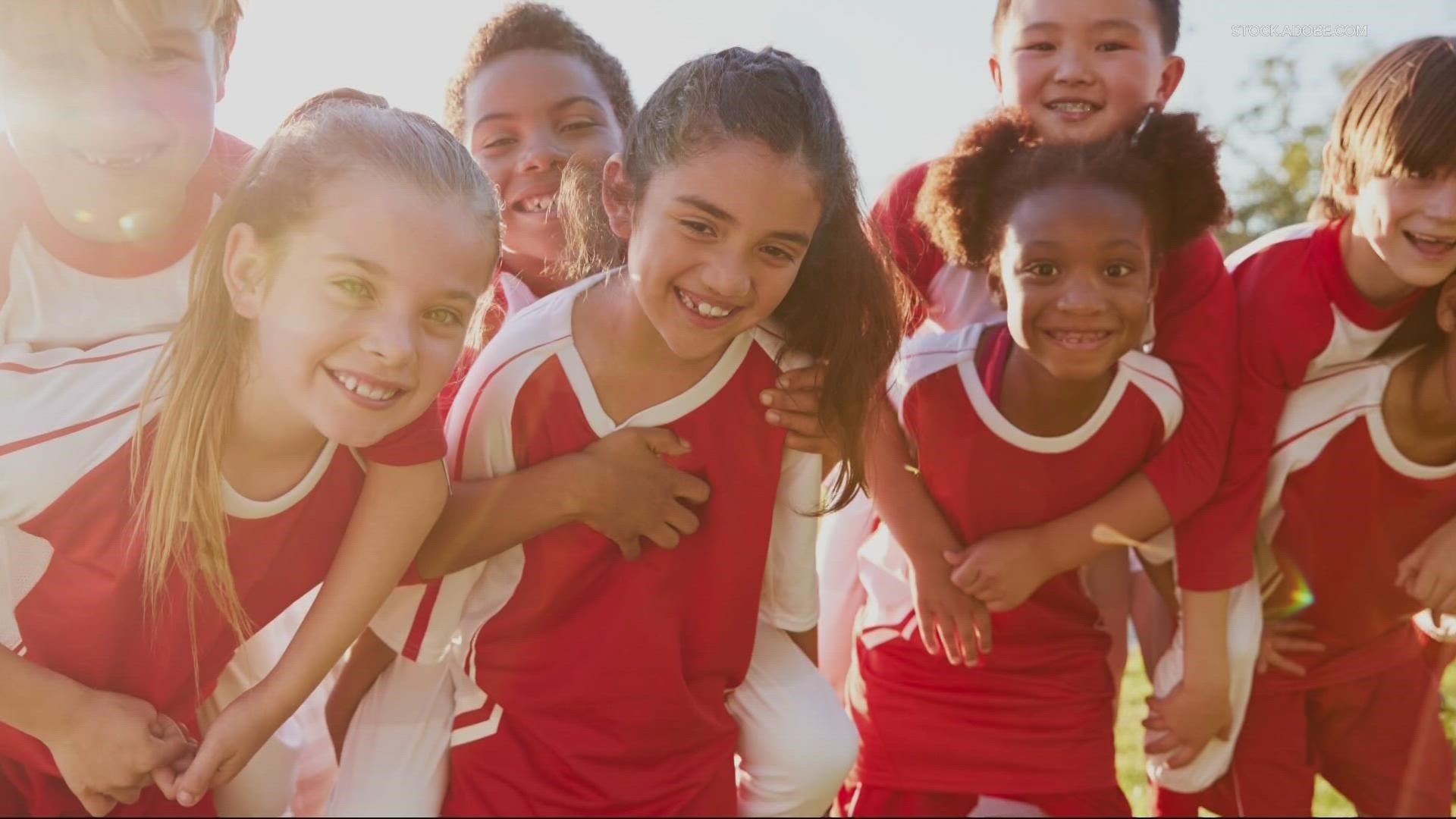PORTLAND, Ore. — Playing sports, organized or otherwise, is an important building block of childhood for many kids and teens. However, whether on the court, field or in water, sports injuries can and will happen.
Every year, more than 3.5 million kids under the age of 14 are treated for sports-related injuries. Almost a third of all childhood injuries are sports-related, according to Yale Medicine
While some injuries are more serious than others, every sport comes with some risk, but there are things parents, coaches and student-athletes can do to prevent them.
“For kids, pain is considered abnormal,” Dr. James Polo with Regence said. “If a child is limping, or they're having pain that's getting worse, or pain is persistent — that's the first sign that they have an injury, and you need to pay attention to that. They should not go back to whatever sport they were engaged in until that pain is resolved and playing the sport should not cause pain.”
Just about any student-athlete has the potential to get hurt, whether from contact with another player or from overuse/misuse of a body part.
“Keep in mind, kids are slower to recover from an injury and they're more at risk for an injury. Their bones are still growing, their muscles are still developing flexibility,” Polo said.
By far, the most common sports injuries are sprains, strains and fractures.
Starting a new sport or early specialization in a sport can increase the risk, said Polo.
“They may not actually know the techniques or the muscle mechanics behind certain movements. It's kind of new to them and because of that they can sometimes find themselves in a situation where they're pushing a little bit harder than they really have the capability of where they suffer either a strain or a sprain or a dislocation,” Polo said.
Aside from those common injuries impacting growing bones and muscles, head injuries can have a lasting impact and can be harder to detect.
“It's very important that when any child has suffered a concussion that first of all they're examined for signs and symptoms and that they're fully recovered and cleared before they actually return to the sport,” Polo said.
“Teach kids about these potential symptoms, but then ask them questions and validate that they don't have them,” Polo said.
The signs and symptoms of a concussion can be subtle and might not show up right away. They can last days, weeks or even longer.
When concussed, you do not always lose consciousness, but that is a possibility.
Symptoms include headache, loss of memory (particularly forgetting the event that caused the concussion) and confusion:
- Slurred speech
- Delayed response to questions
- Dazed appearance
- Forgetfulness — like asking the same question.
- Dizziness or “seeing stars”
There are physical signs to be aware of:
- Nausea
- Vomiting
- Fatigue
- Blurry vision
Sensory changes include a change in hearing, taste, feeling dizzy and being suddenly sensitive to light.
“These are very important to be mindful of because once you've suffered a concussion, essentially a part of the brain Has been a little bit bruised, and that part of the brain needs to fully recover before it's exposed to potential risk again,” Polo said.
If you or your child experiences a head injury, even if emergency care isn’t necessary, you should still see a doctor.
So, what can we do to prevent sports injuries?
First, use proper protective gear. Make sure the equipment fits properly, is well maintained, and is worn correctly.
Next, make sure your child is ready for the sport they want to play.
“Make sure that kids are physically fit to actually be in the sport that they want to play and this often involves making sure that developmentally they're appropriate that they're at the right place for the particular sport and matching them well with other children that are at the same level,” Polo said.
That is just one reason those yearly checkups are so important as our kids grow.
Finally, Polo said he cannot underscore the importance of practice. Follow the game rules and practice good sportsmanship.
The big takeaway for parents: if you notice a change, speak up and make sure your student-athlete gets the proper care and recovery time before getting back in the game.

